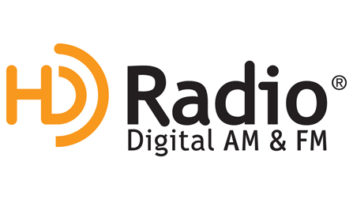FCC Approves HD Radio Power Increase
Apr 1, 2010 12:00 PM, By Harry Martin
In a long-awaited move, the FCC in February authorized IBOC digital FM radio a substantial increase in operating power. In so doing, the Commission brushed aside most of the interference concerns raised by non-HD Radio stations, particularly those operating on channels first adjacent to HD Radio stations. While the increased power authorizations will still be subject to a complaint process that could theoretically require a reduction in power in certain situations, that process has some procedural drawbacks that will likely make it difficult to use.
Background
The digital radio specs originally adopted by the FCC were designed by HD Radio’s proponents, who assured the Commission that those specs would be sufficient to deliver a station’s digital service to everybody who could receive the station’s conventional analog signal. In industry parlance, digital coverage would �replicate� analog coverage. The crucial parameter was power: A station’s digital ERP was set at one percent of its analog ERP (i.e., 20 decibels below carrier, or -20dBc). But in practice HD Radio did not replicate analog service. HD Radio proponents thus began a long campaign for the power increase reflected in the FCC’s February decision.
New power levels and STAs
Under the new rules, eligible stations will be permitted to increase their digital power by 6dB � meaning digital power can increase from the current maximum ERP of -20dBc to -14dBc. No prior approval will be required as long as the stations file a notification of the increase through CDBS within 10 days. While the revised power increase rule will not become effective until OMB has approved the new notification form, the Commission has announced that it will grant STAs for higher power (by up to 6dB) in the meantime, and has posted how-to STA instructions on its website.
Many eligible stations will be permitted to apply for even greater power increases than 6dB, i.e., up to a total increase of 10dB over current levels � to -10dBc. Increasing power beyond the 6dB automatic increase will be based on a go/no go analysis designed specifically to protect potentially affected first-adjacent channel stations
Super-powered stations � e.g., Class B stations that operate with parameters that exceed the maximums for their class � will be limited to the currently permitted -20dBc level or 10dB below the maximum analog power that would be authorized for the class of the super-powered FM station adjusted for the station’s HAAT, predicted in accordance with Section 73.211(b). And unlike non-super-powered facilities, super-powered stations will not be permitted to increase digital power without prior FCC approval.
Complaint procedures
The FCC’s decision provides a formal complaint mechanism for first-adjacent channel stations that receive interference as a result of a neighboring station’s digital power increase. If a station believes it is receiving interference within its protected contour from an HD Radio station operating with digital ERP in excess of -14dBc, the complainant must first attempt to work cooperatively with the interfering station to resolve the issue. That is done by progressively reducing the HD Radio station’s digital operating power until a mutually agreeable power is reached. If cooperation is successful, the interfering station must simply notify the Commission of its new digital power.
If no amicable resolution is reached, the station receiving interference may file a complaint with the FCC. Such a complaint must be supported by at least six reports of on-going (not transitory) interference. Each report must include a map showing the location of the reported interference and a detailed description of the nature and extent of the interference at that location. Interference allegedly occurring outside the station’s protected contour will not be considered. The complaint process requires power reductions by the interfering station until the matter is resolved by the FCC.
Dateline
For noncommercial radio stations in Michigan and Ohio, their biennial ownership report deadline is June 1. The deadline for submission of biennial ownership reports for commercial radio stations has been suspended pending a further redesign of Form 323.
June 1 is the deadline for radio stations licensed in the following states to place their Annual EEO Reports in their public files: Arizona, DC, Idaho, Maryland, Michigan, New Mexico, Nevada, Ohio, Utah, Virginia, West Virginia and Wyoming.
Martin is a member of Fletcher, Heald & Hildreth, PLC, Arlington, Virginia. E-mail:[email protected]










